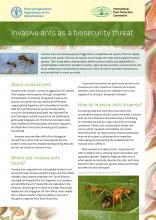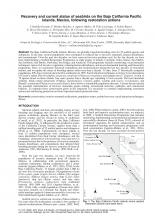Recovery and current status of seabirds on the Baja California Pacific Islands, Mexico, following restoration actions


Island and Ocean Ecosystems, BRB
Available Online
Aguilar-Vargas, A.
,
Aguirre-Muñoz, A.
,
Aztorga-Ornelas, A.
,
Bedolla-Guzmán, Y.
,
Bravo-Hernández, E.
,
Corrales-Sauceda, M.
,
Cárdenas-Tapia, A.
,
Fabila-Blanco, A.
,
Félix-Lizárraga, M.
,
Hernández-Montoya, J.
,
Hernández-Ríos, A.
,
Latofski-Robles, M.
,
Luna-Mendoza, L.
,
Méndez-Sánchez, F.
,
Ortiz-Alcaraz, A.
,
Rojas-Mayoral, E.
,
Solís-Carlos, F.
,
Torres-García, F.
2019
The Baja California Pacifc Islands, Mexico, are globally important breeding sites for 22 seabird species and subspecies. In the past, several populations were extirpated or reduced due to invasive mammals, human disturbance, and contaminants. Over the past two decades, we have removed invasive predators and, for the last decade, we have been implementing a Seabird Restoration Programme on eight groups of islands: Coronado, Todos Santos, San Martín, San Jerónimo, San Benito, Natividad, San Roque, and Asunción. This programme includes monitoring; social attraction techniques; removal of invasive vegetation; reducing human disturbance; and an environmental learning and biosecurity programme. Here, we summarise historical extirpations and recolonisations during the last two decades of restoration actions, and we update the status of breeding species after more than a decade. To date, from 27 historically extirpated populations, 80% have returned since the ?rst eradication in 1995. Social attraction techniques were key in recolonisations of Cassins auklet (Ptychoramphus aleuticus), royal tern (Thalasseus maximus), and elegant tern (T. elegans). A total of 19 species breed on these islands, four more species than a decade ago, including 12 new records. The most abundant seabirds, black-vented shearwater (Puffnus opisthomelas), Cassins auklet, western gull (Larus occidentalis), and Brandts cormorant (Phalacrocorax penicillatus), have shown a remarkable population increase. Current threats include the potential reintroduction of invasive mammals, guano mining, recreational activities, pollution, and commercial ?sheries. To maintain these conservation gains in the long-term it is necessary to continue implementing restoration actions and reinforcing protection on these important natural protected areas.







